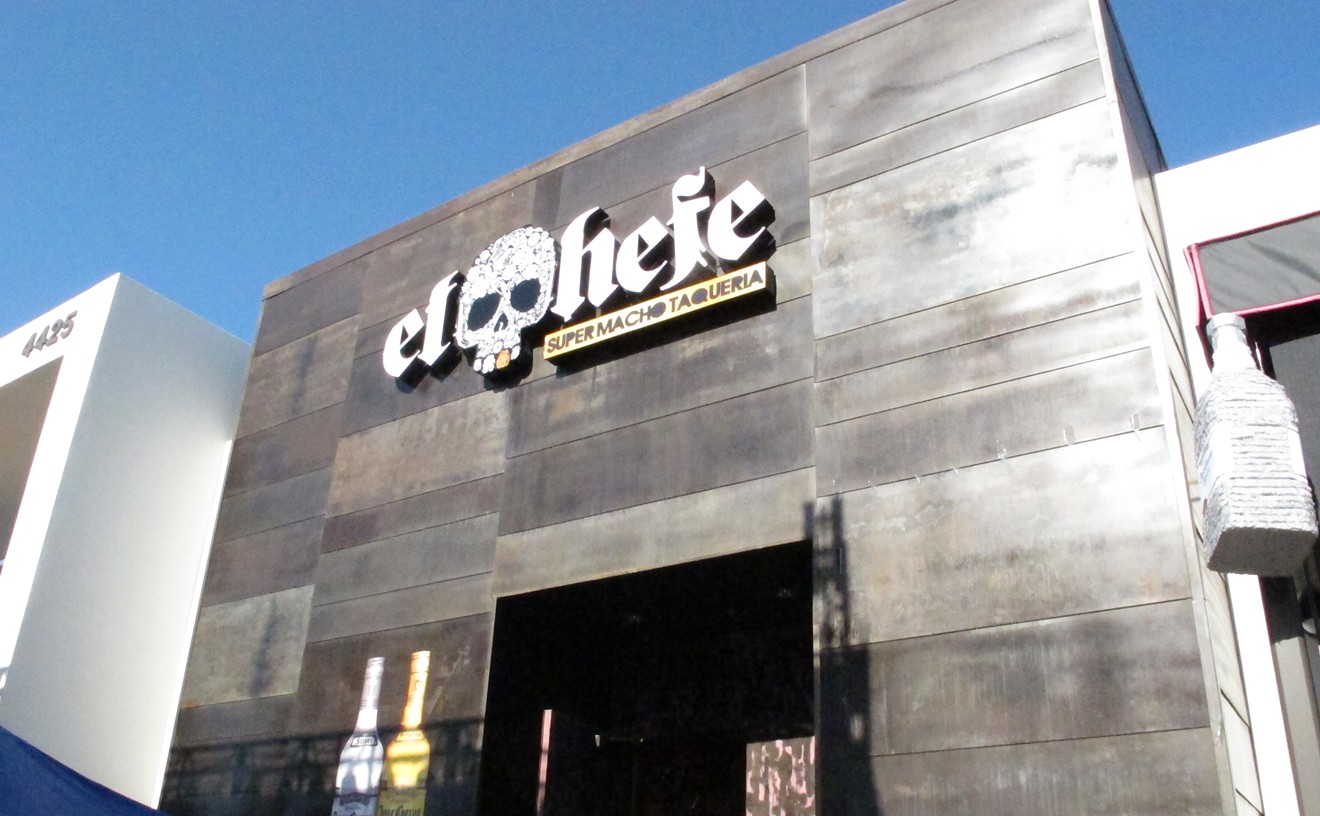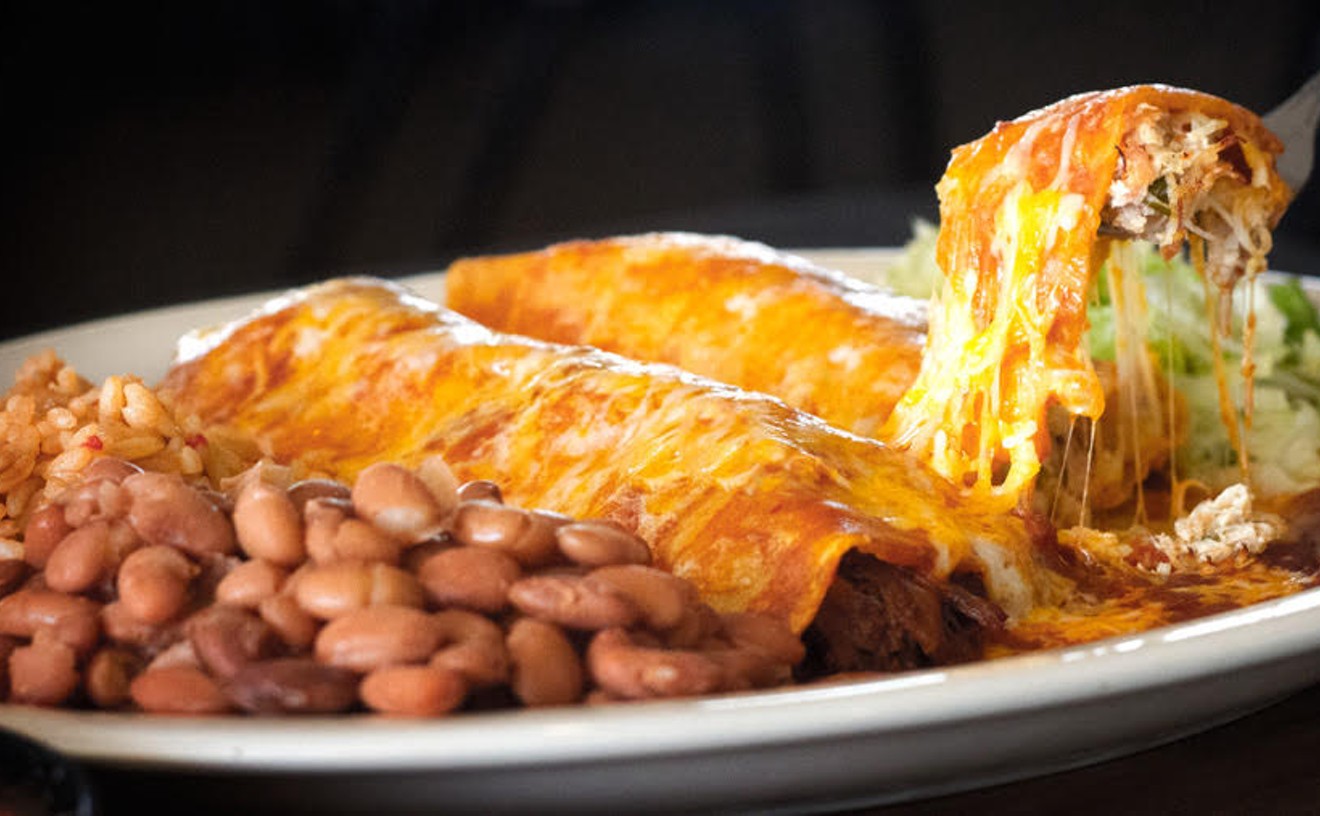At least you've seen pictures. But you've never seen pictures of the Deer Dance, a sacred celebration held around Easter each year in Guadalupe, the beleaguered strip of a tiny town bordered by big city Phoenix and its 'burbs. You're welcome to attend the festivities, though (as long as you're not one of Joe Arpaio's deputies), and if you find yourself on the streets of Guadalupe in the weeks leading up to Easter (especially on Good Friday), you may be privy to a fascinating ritual.
Approaching the small white church at the center of town, you will see black robed figures with masks and red-tipped swords rushing at the building as a cacophony of bells and drums fill the air. Suddenly, out of the church a flurry of children in white burst forth to chase back the masked figures and assail them with flowers. On one side of the angels, men wearing streamers on their heads and bells on their ankles shake a gourd in one hand and wave a feathered bamboo wand in the other. On the other side of the angels, masked dancers wrapped in blankets from the waist down are led by the most fascinating figure of all: a man with a deer hoof belt and bare torso, shaking gourds in both hands and rattlers tied around his ankles. On his head an ornate headdress is crowned by the stuffed head and antlers of a deer. We know about this only because we asked. In a time when digital technologies and instant communication have exposed the whole world for our viewing through YouTube, Flickr, and Facebook, it is hard to imagine much that hasn't been recorded and posted. But, when it comes to its unique religious rituals, Guadalupe, a community of about 5,500, has managed so far.
Driving over the town line from Tempe, you may notice a sign prohibiting photography, video recording, and even note-taking during religious ceremonies. The Pascua Yaqui Indian community guards the mystery of its rituals scrupulously, inviting outsiders to watch yet guarding themselves against an onslaught of tourism. "It's a place where we come together, eat together, pray together, and everybody's welcome, it doesn't matter as long as you have respect for the ceremony," says Rafael Armenta, cultural adviser at the Pascua Yaqui Tribe and a lifelong resident of Guadalupe).
To understand what makes the religious ceremonies in Guadalupe so special, go back about a hundred years. In the late 19th and early 20th centuries, the Yaqui Indians were under great pressure from the political authorities in Mexico to give up their land in Sonora. Some Yaquis had always resided in the Southwestern United States, but many more came to Arizona as refugees when oppression under President Porforio Diaz escalated. Guadalupe was settled by Yaquis as early as the 1880s, but the town did not become legally recognized until 1914 and was incorporated in 1975.
The Yaquis were Christianized by Spanish Jesuit missionaries in the 16th century and have since been practicing a blend of their original polytheistic traditions and devotional Catholic spirituality. Stepping into Guadalupe during Holy Week or on December 12, the feast day of the town's patron saint, Our Lady of Guadalupe, one is instantly transported into a new world of colors, song, and dance. To an outside observer, the rituals may seem incomprehensible, but they are essentially a retelling of familiar stories, such as Christ's passion, through the symbols and traditions of the Yaqui people. The flower, or sewa, is ubiquitous. Whether hanging in garlands between the demure houses, offered to the shrine of the Virgin, embroidered into clothing, or spoken about in casual conversation, the flower is a symbol that harks back to ancient Yaqui beliefs. Flowers are the symbol of the triumph of good over evil. In pre-Christian cosmology, flowers represented one of the five parts of the natural and mystical world, but today, their importance references the crucifixion of Jesus.
The Yaquis hold that when Christ was on the cross, his dripping blood was transformed into flowers. Thus, the sewa is a symbol of salvation and redemption. The deer dancer is the personification of the flower and each member of the community has his or her own flower, or spiritual duty, to take care of. "The deer dancer is the one that represents our tribe . . . He dances with the music, like the water drum and the rasp, and they sing lyrics about the desert world. The deer dancer represents the flower and the flower represents grace. Before God we have to show that we have earned the flower," says Armenta. "They hang streamers of flowers all over. We always decorate with flowers when we're celebrating because we all work at the flower. Everyone has a flower to work at."
The ceremonies take place in a large open plaza in front of Our Lady of Guadalupe Church (5445 E. Calle San Angelo), where ramadas are set up to accommodate the dancers and musicians. On the streets surrounding the church, 14 crosses are set up to symbolize stages of Christ's journey. During Lent, the ceremonies take place each week from dusk on Friday until dusk on Sunday, totaling more than 50 hours and including more than 100 men. The ritual dances are performed in front of a crucifix and shrines are included in the procession.The participating groups, among which are the Fariseos (Pharisees), Pilatos, and Montachines, are made up of men who are confirmed into the duty of dance and song and perform in the name of God and as a tribute to the sacrifice of Jesus. The deer dancer is chosen from the community by the Moro, an elder who recognizes the gift for the dance and spiritual connectivity within a man young or old and confirms onto him the duty of the dance. While most societies are only active during the Lent season, the deer dancers in Guadalupe are present at other holidays throughout the year.
Armenta, whose father was a member of the Fariseos, goes to every festival ceremony every year. He underscores the importance of participation as a personal penance, a religious commitment, and a sort of insurance policy. "My dad always used to say, and I'll always remember those words, 'You don't know, God made us and he's the one that knows when he's going to invite us to heaven. So maybe this would be the last year that you're going to see the ceremonies, so it's always good to be there.'" To hear Armenta's deer dance story, go to www.phoenixnewtimes.com/ bestof2011.











